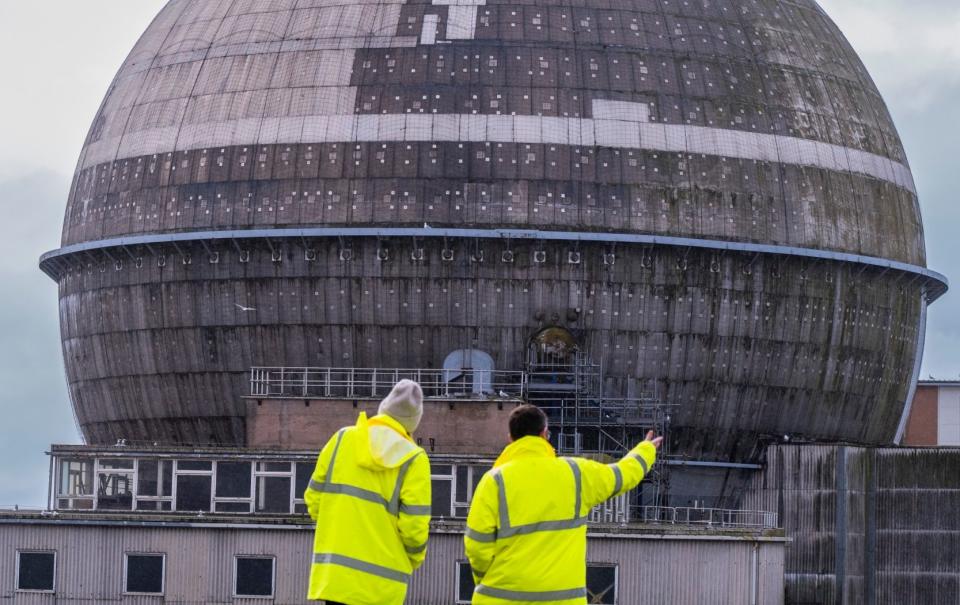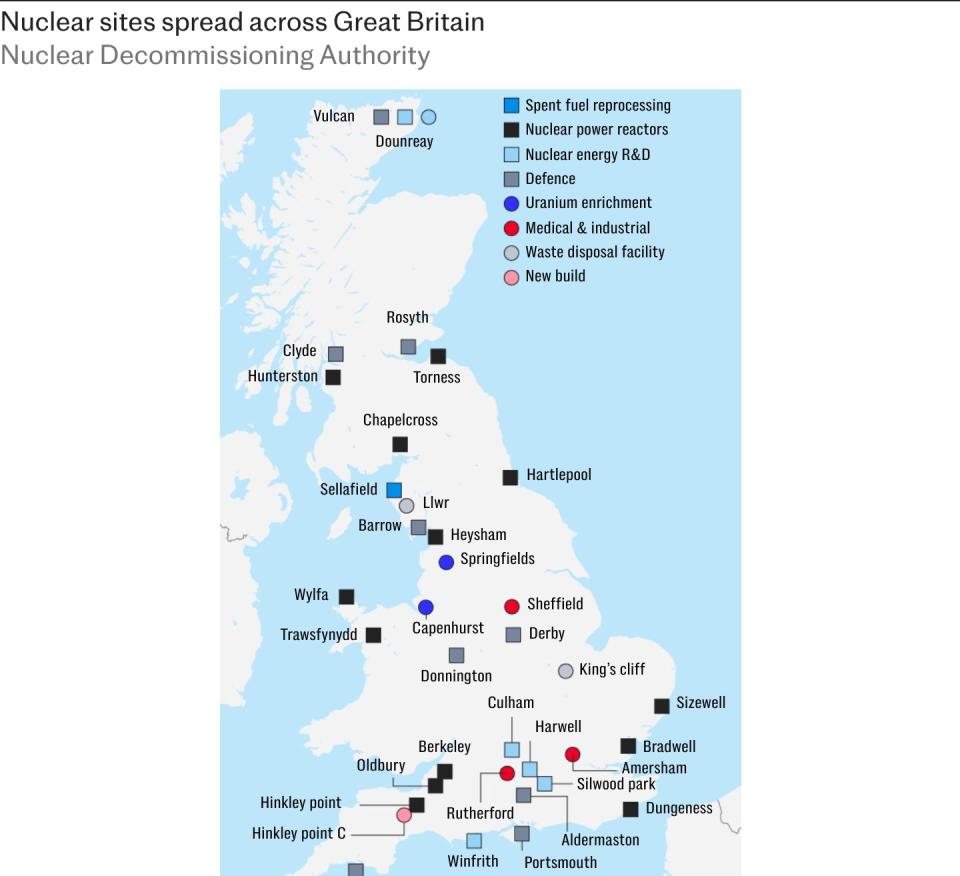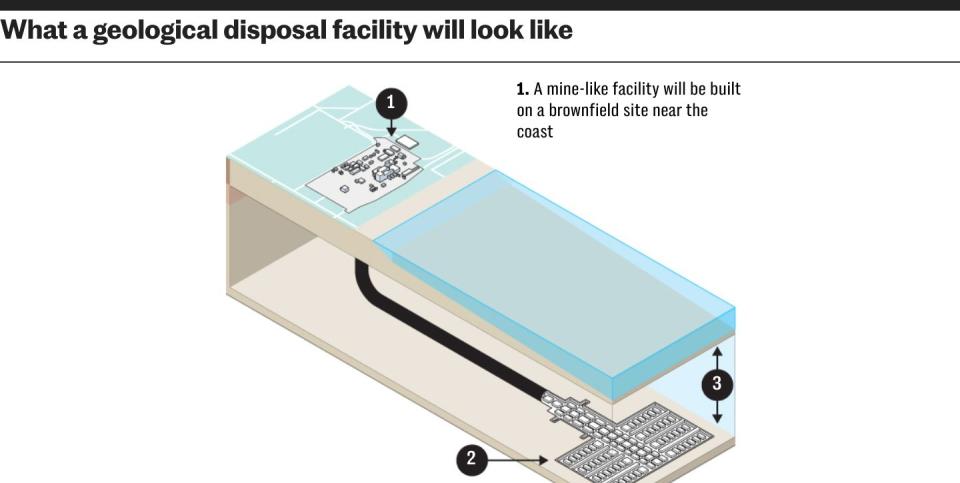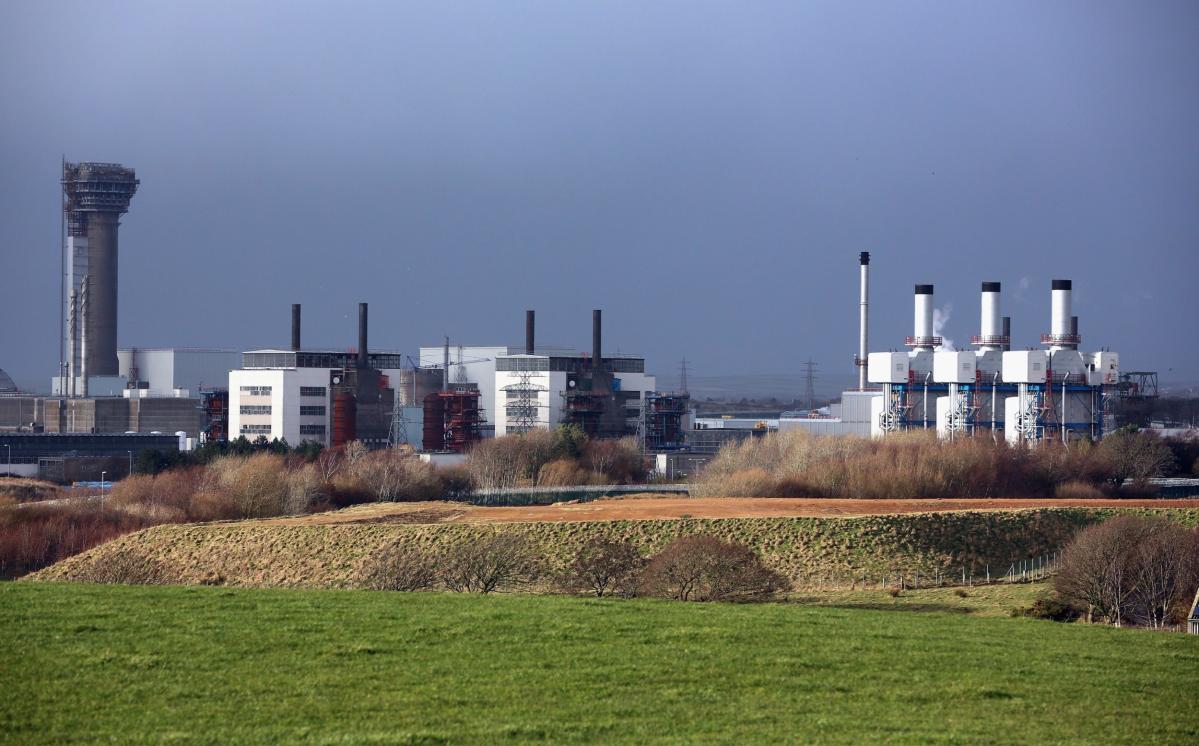A crumbling nuclear waste site in Cumbria is leaking thousands of litres of radioactive water into the ground every day, a report by Whitehall’s spending watchdog has warned.
The so-called Magnox Swarf Storage Silo is among the most hazardous buildings at Sellafield, Europe’s largest nuclear site, with work ongoing to transfer its contents into newer, safer facilities.
But a report published on Wednesday said slow progress had pushed back an estimated completion date into the late 2050s, with “significant safety and financial consequences”.
The ageing building sprung a leak in 2019 and is spewing about 2,100 litres of water into the ground every day, the National Audit Office (NAO) said.
However, due to the extreme hazards involved in accessing the building, engineers are unable to fix the leak or even determine its exact cause – meaning it is poised to continue for another 30 years.
The amount leaked daily could fill about seven standard-sized bathtubs. At that rate, it would take just over three years to fill an Olympic-sized swimming pool.


Sellafield Ltd insists the risk posed to workers and the public from the leak is ‘low’ – Chris Watt
Sellafield Ltd, the taxpayer-owned company tasked with cleaning up the silo and the wider Sellafield site, insists the risk posed to workers and the public from the leak is “low”.
But the NAO said the leak underlined the serious consequences of failing to keep up with scheduled works at the site, which is overseen by the Nuclear Decommissioning Authority.
The watchdog’s report said: “Sellafield has demonstrated that it can remove safely the most hazardous waste but is not progressing quickly enough to meet its plans.”
The silo is one of several old structures at Sellafield that contain highly radioactive materials and currently pose an “intolerable” risk, the NAO said.
It was built in the 1960s – and then extended three times – to house discarded pieces of cladding that previously encased fuel for Britain’s 11 Magnox nuclear power stations.
Inside the silo, 22 concrete-lined containers – each about 15 metres deep and partially underground – are filled with water to keep the pieces of cladding submerged. This is because the cladding is largely made from magnesium, which ignites and burns easily.
However, over time the water and the radioactive metal have mingled and become a highly toxic soup known as liquor.
British officials first detected a leak from the facility in the 1970s, by monitoring the rate at which water levels dropped within the containers.
That leak initially sealed itself, likely because something plugged the hole. But it then started again five years ago when work began to prepare the silo to be cleaned.
A spokesman for Sellafield Ltd stressed that it was currently not considered a threat to workers or the public and that the radioactive elements of the liquid were being soaked up by clay in the ground beneath the facility.
He added: “We use a network of monitoring wells around the Sellafield site and off-site to determine whether radioactivity is migrating via groundwater networks.
“This gives us a high degree of certainty that the liquor is not migrating and remains bound up under the building.”
He said: “We have a range of intervention techniques available if the liquor does begin to migrate.
“While the water is radioactive, the vast majority of the radioactivity in the building – 99.5pc – remains held within the solid waste.”
The Office for Nuclear Regulation has also deemed the risk “low”, according to the NAO.
However, some scientists remain undecided on what level of risk it poses and are carrying out “ongoing radiological dose assessments”, the Guardian reported last year.
The issue will be resolved fully when Sellafield Ltd finishes emptying the silo. But since the NAO’s last audit in 2018, the expected completion date for that work has slipped from 2046 to 2059.
The extraction process, carried out in sealed conditions, involves a crane with a teddy-grabber-style claw that reaches into the containers and removes the nuclear waste in batches, dropping them into specially-made steel boxes.
These boxes are then moved to a new, secure storage site at Sellafield.
The work was originally expected to begin in 2021 but it was delayed by a year, with 19 boxes filled in 2022 to 2023 and 23 in 2023 to 2024, the NAO said. Sellafield Ltd aims to fill 546 boxes per year by the mid-2030s.
The company blamed the delays on restrictions imposed during the Covid pandemic, staff shortages and the “deteriorating condition of key buildings and facilities”.


Staff shortages on the site had become so bad that it was “increasingly common” for buildings to be temporarily shut down for safety reasons, the NAO found.
A spokesman for Sellafield said the company had grown its workforce from around 11,200 to 12,000 in the past year and expected this problem to fade as new recruits became fully trained.
However, a key issue that remains unresolved is the fate of the site’s “essential” testing laboratory, which is more than 70 years old and described as being in extremely poor condition.
The lab is needed to carry out basic scientific tests to determine the physical, chemical and radioactive properties of waste at Sellafield – with its potential failure posing the “biggest single risk to its current and future operations”, the NAO warned.
Sellafield Ltd began work in 2016 to refurbish another laboratory – itself more than 25 years old – and has spent £265m to date on the project.
But since then, the condition of both the old and newer buildings has been found to be significantly worse than thought. Sellafield has admitted that it no longer had a “coherent plan” to provide laboratory services.
The company is currently deciding what to do next.
Separately, Sellafield Ltd was fined £332,500 for cyber security shortfalls earlier this month by the Office for Nuclear Regulation. The agency said there was no evidence that any vulnerabilities at Sellafield had been exploited. Sellafield said it took cybersecurity seriously and about the charges related to historical offences, it said improvements to its systems and network had been made.


In the long run, the Government has set out plans for an underground geological disposal facility – potentially off the coast of Cumbria – which will house all the nuclear material currently stored at Sellafield.
However, that is not expected to come into service until the 2050s at the earliest.
Meanwhile, work to clean up Sellafield – the site of Britain’s worst ever nuclear accident, following a fire at the Windscale Piles nuclear reactors – will not be completed for another 100 years.
That will involve the demolition of all buildings there and decontamination of the ground.
In all, the NAO says the current spending provision for Sellafield is £136bn, about two and a half times the UK’s annual defence budget. That figure – an estimate of future decommissioning costs, adjusted for inflation – has increased by about 19pc since 2019.
“This is largely down to further increases in the cost of future work – and the time it is expected to take – and more realistic assumptions about future efficiency savings,” the NAO said.
